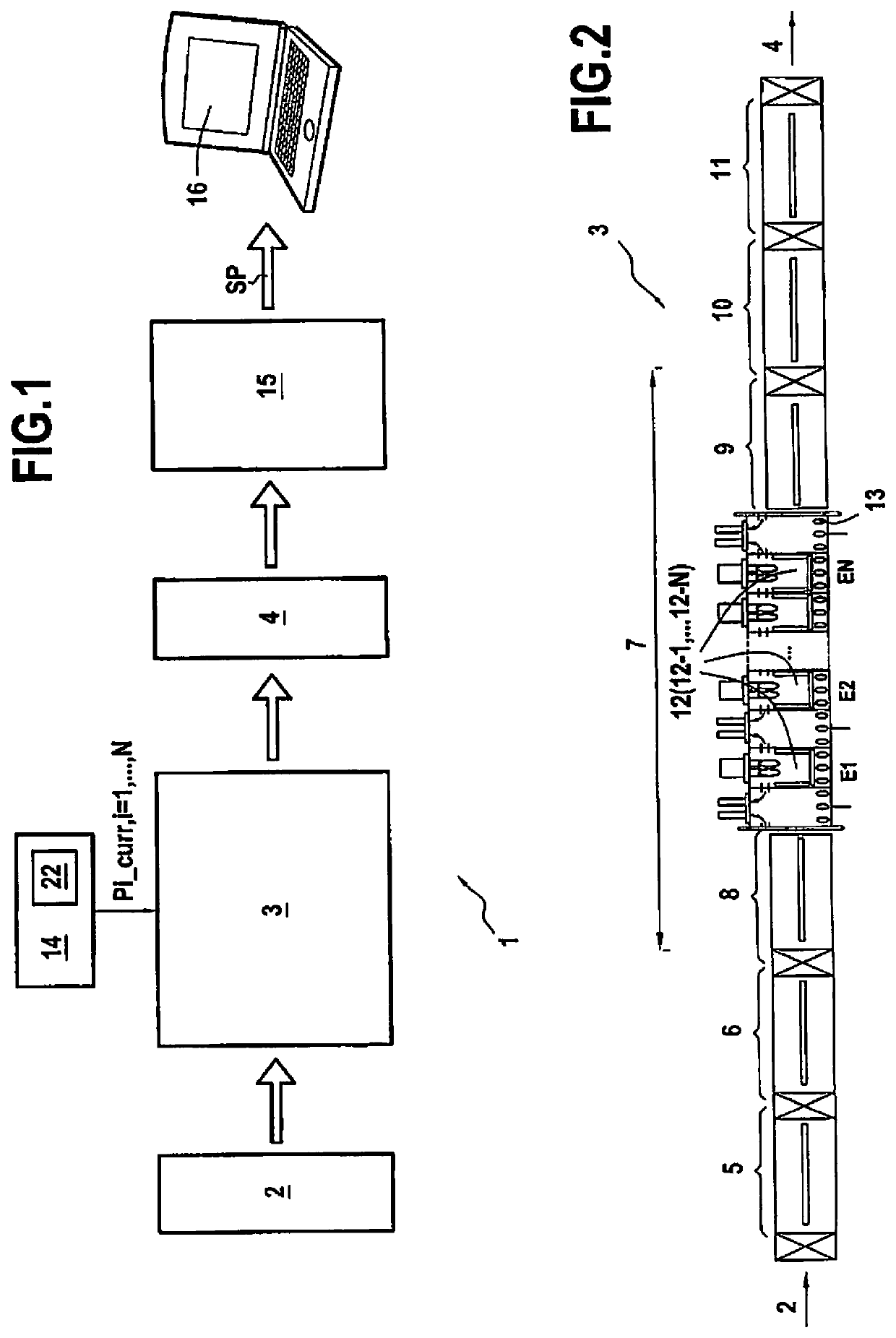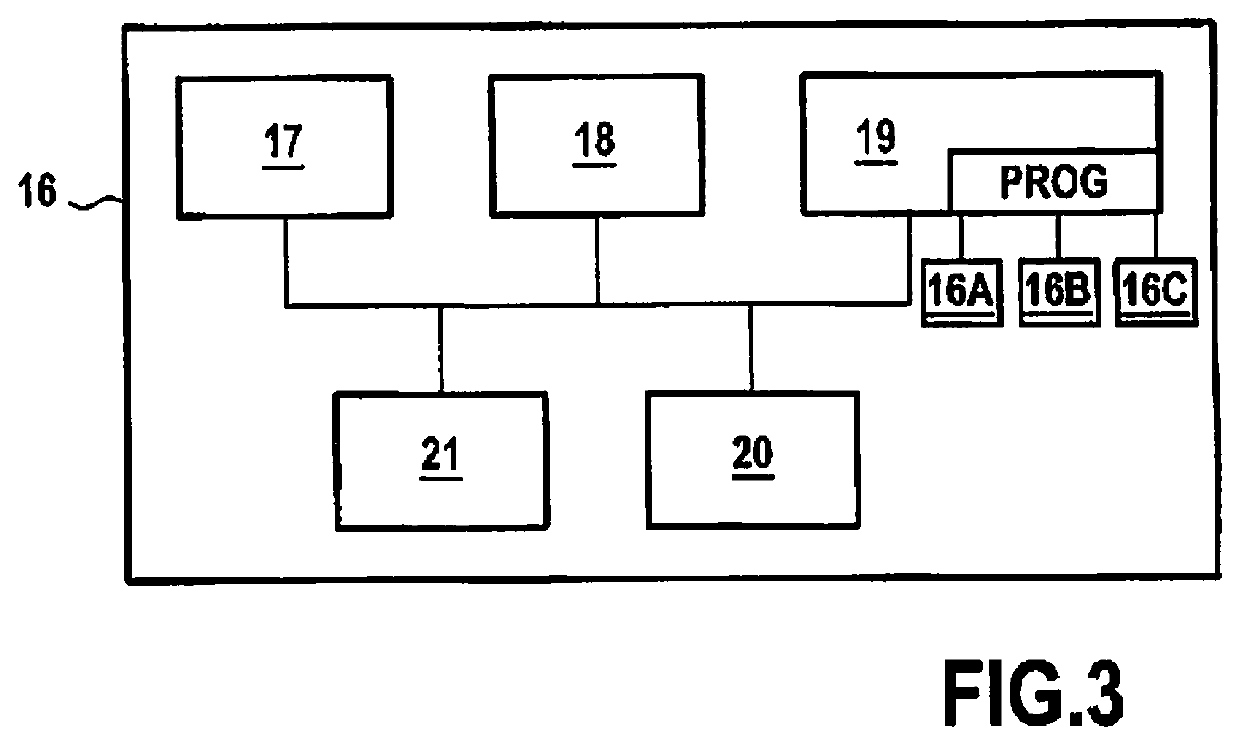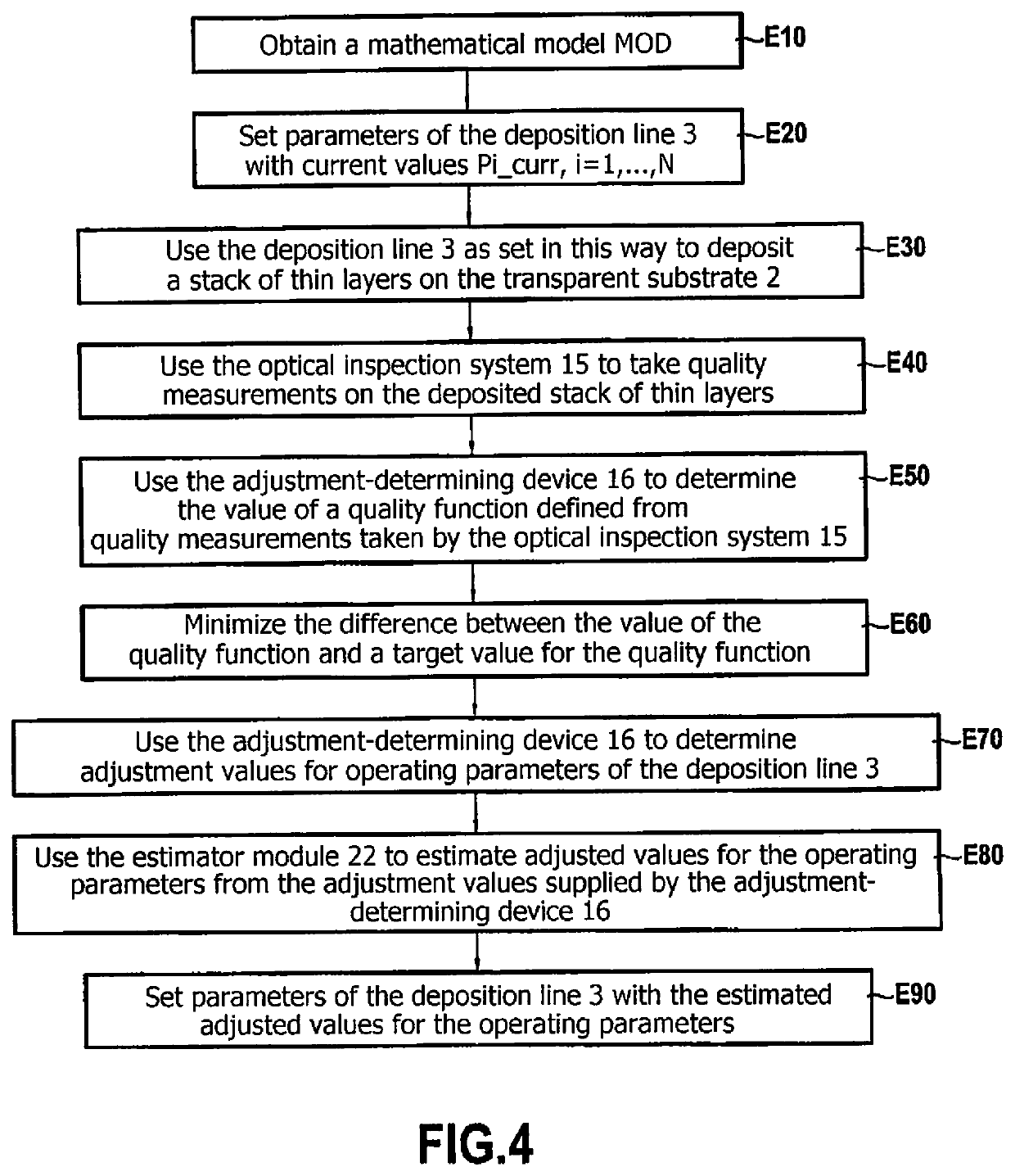A method and a device for automatically determining adjustment values for operating parameters of a deposition line
- Summary
- Abstract
- Description
- Claims
- Application Information
AI Technical Summary
Benefits of technology
Problems solved by technology
Method used
Image
Examples
Embodiment Construction
[0109]FIG. 1 shows, in its environment, a particular embodiment of a deposition system 1 in accordance with the invention for use in depositing a stack of thin layers on a transparent substrate 2 by means of a deposition line 3. The deposition system 1 serves advantageously to set the parameters of the deposition line 3 appropriately for ensuring that the stack of thin layers corresponds to predetermined target characteristics.
[0110]By way of illustration, in the example shown in FIG. 1, the transparent substrate 2 is a glass substrate having a thickness of 6 millimeters (mm) having a stack of thin layers deposited thereon, the stack comprising a plurality of functional thin layers suitable for acting on solar radiation (specifically in this example two silver layers referenced Ag1 and Ag2), and coatings formed by one or more thin layers situated on either side of each functional layer. Below, the term “module” (M1, M2, M3) is used to designate each of the coatings on either side of...
PUM
| Property | Measurement | Unit |
|---|---|---|
| Weight | aaaaa | aaaaa |
| Chemical properties | aaaaa | aaaaa |
| Width | aaaaa | aaaaa |
Abstract
Description
Claims
Application Information
 Login to View More
Login to View More - R&D Engineer
- R&D Manager
- IP Professional
- Industry Leading Data Capabilities
- Powerful AI technology
- Patent DNA Extraction
Browse by: Latest US Patents, China's latest patents, Technical Efficacy Thesaurus, Application Domain, Technology Topic, Popular Technical Reports.
© 2024 PatSnap. All rights reserved.Legal|Privacy policy|Modern Slavery Act Transparency Statement|Sitemap|About US| Contact US: help@patsnap.com










